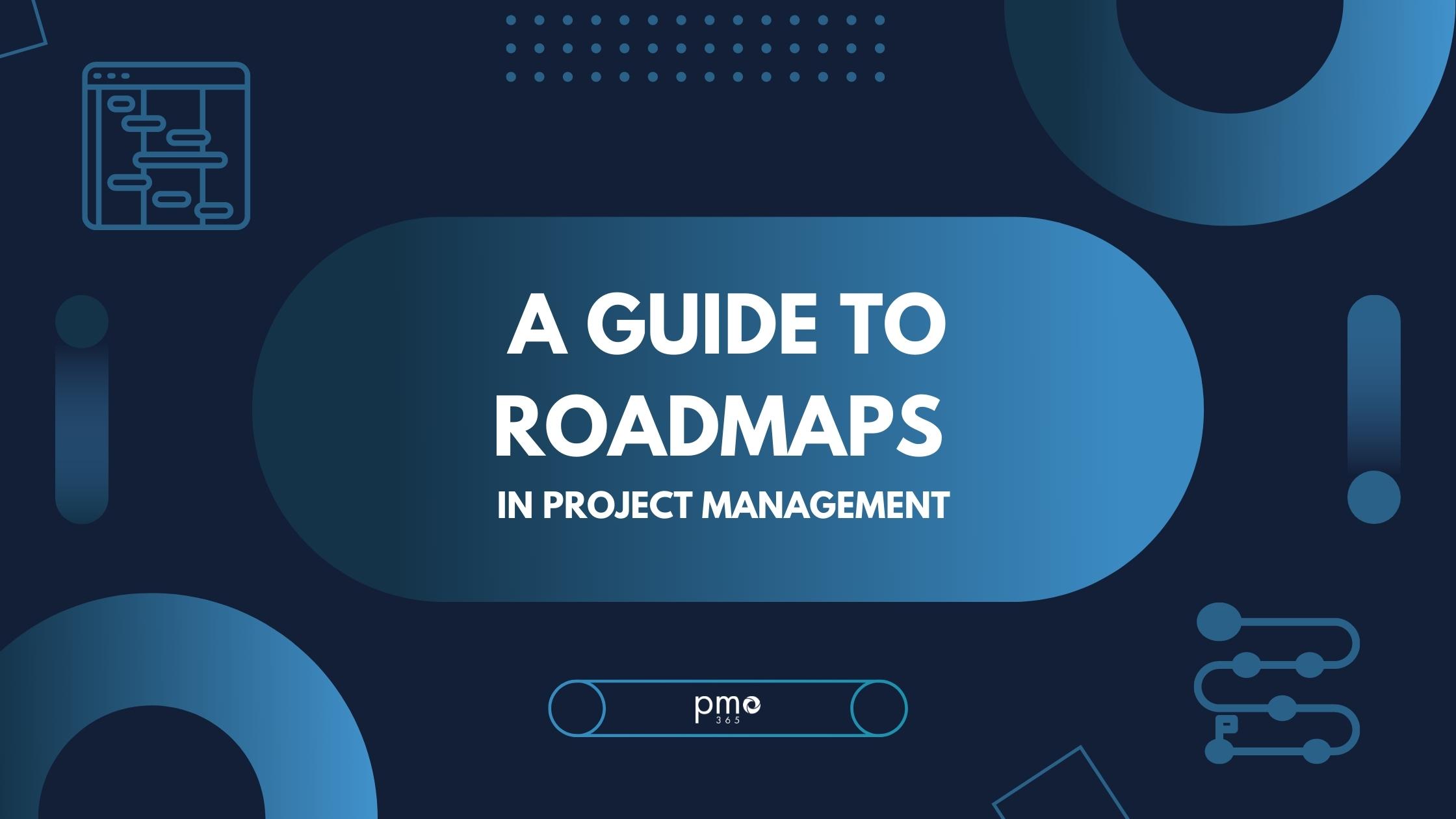Organisations worldwide have attempted to standardise project execution through PMOs for decades, yet the track record of traditional PMOs is chequered.
Various studies paint a concerning picture of high PMO failure and abandonment rates:
- A Gartner study found that 60% of PMOs are shut down within three years of being established, largely due to unclear roles, lack of leadership support, or unrealistic expectations. This indicates that many PMOs fail to gain a sustainable mandate.
- Similarly, a Forrester research report noted approximately 50%–75% of PMOs close within their first three years of operation. In essence, new PMOs often cannot justify their existence to the organisation beyond the short term.
- Even when not formally disbanded, a significant proportion of PMOs languish. One 2021 survey in Australia found about one in five organisations had discontinued their PMO in the past two years because it became ineffective or a drain on resources.
- Many PMOs that survive are still viewed as underperforming. In PMI’s assessments, only a minority of organisations report that their PMO regularly helps achieve business goals. For example, just 22% of organisations without a strategic PMO said their projects achieved all business goals, versus over one in three organisations that had a strategic PMO achieving full success.

These statistics underscore an uncomfortable reality: too many PMOs fail to deliver the value expected of them. The consequence is lost time, wasted investment, and frustrated executives. When a PMO is seen as merely adding bureaucracy without improving outcomes, leadership is quick to cut it from the organisational chart. As the data suggests, PMOs that function only as report generating bodies tend not to last.
However, it is not the concept of a PMO that is at fault, it’s how traditional PMOs have been implemented and run. In fact, organisations with high performing PMOs demonstrate significantly better project success rates. PMI and Gartner both find that effective PMOs, especially those aligned to strategy, correlate with more projects delivered on time, on budget, and meeting their goals. The high failure rates, then, indicate a gap between what most PMOs do and what the business actually needs from them.
To bridge this gap, we must examine the root causes behind the failures. Why do so many PMOs struggle to prove their worth? The following section analyses the key reasons traditional PMOs often fail, supported by industry research and examples.
Common Reasons Traditional PMOs Fail
1. Lack of Strategic Alignment
One of the most cited reasons for PMO failure is a fundamental disconnect between projects and the organisation’s strategy. Traditional PMOs sometimes focus on enforcing process compliance (the “mechanics” of project management) and lose sight of whether projects are the right ones to achieve strategic objectives. This misalignment can be fatal: if the PMO is not helping to execute the corporate strategy, executives will question its relevance.
A global research report by Business Improvement Architects (BIA) Canada showed that the major cause of project failures was misalignment with organisational strategy. A notorious example was Royal Dutch Shell’s Sakhalin-II project in Russia, where lack of strategic alignment led to massive cost overruns, the project’s budget doubled from $10 billion to $20 billion. In that case, the disconnect between project scope and corporate strategy meant critical risks and stakeholder considerations were overlooked.
Many PMOs do not have processes to ensure alignment. The same BIA report found 68% of organisations had no formal way to prioritise projects or link them to strategy. It is easy to see how a PMO in such an environment becomes merely an administrative function, pushing projects that might not deliver real strategic value. When strategy changes (as it frequently does in today’s market), an inflexible PMO might continue to support legacy projects that no longer fit – essentially “doing the wrong projects right.” This misalignment not only squanders resources but also erodes the PMO’s credibility.
By contrast, aligned PMOs drive better results. organisations that excel at aligning projects with strategy have far higher success rates; projects aligned to strategic goals are 50% more likely to finish on time and 45% more likely to stay on budget. When a PMO actively maps the project portfolio to strategic objectives (often called Strategic Portfolio Management), it ensures the organisation invests in the initiatives that matter most. Lack of strategic alignment, therefore, is a critical failure factor in traditional PMOs.
2. Rigid Processes and Inflexibility
Today’s business environment demands agility, yet many PMOs remain steeped in rigid, plan-driven methodologies. The traditional PMO model, rooted in 1950s style command and control project management, emphasises following a set process and detailed up-front planning. While consistency in methodology is good, excessive rigidity can render a PMO unable to cope with change.
A telling symptom is the difficulty many PMOs have in adapting to Agile and hybrid project methodologies. Agile approaches (with iterative development, evolving requirements, and self-organising teams) have become mainstream as of 2022, more than 65% of organisations use Agile methods, often alongside traditional waterfall approaches. However, many PMOs still enforce heavyweight governance frameworks that slow down Agile teams instead of enabling them. For example, requiring exhaustive documentation, phase gate approvals, or fixed scope/schedule on Agile initiatives defeats the purpose of agility. PMOs that cannot flex their governance to accommodate different delivery approaches end up alienating project teams and product owners.
Deloitte observes that a mismatch between traditional PMO techniques and Agile projects is common organisations contort Agile projects to fit PMO reporting, rather than updating the PMO’s approach .This leads to frustration and “workarounds” that bypass the PMO. In the worst case, an inflexible PMO becomes an obstacle to successful project delivery. Plans rarely play out exactly as conceived, yet an inflexible PMO may continue measuring against an outdated baseline and be “blindsided by problems” that iterative methods could have surfaced earlier.
In sum, rigidity in the face of change is a recipe for PMO failure. organisations that experienced fast paced change during the COVID-19 pandemic learned this lesson those with rigid PMOs struggled to reprioritise and reallocate resources quickly. Conversely, PMOs that adopted a more flexible, supportive role helped their organisations pivot and respond. Gartner predicts that by this year (2025), 75% of PMO value measures will focus on strategic outcomes and adaptability, rather than adherence to process efficiency . Traditional PMOs that fail to evolve from a compliance mindset to an adaptability mindset risk becoming obsolete.
3. Poor Change Management and Culture Issues
Another major failure factor lies in the people side of projects, something traditional PMOs often underestimate. Projects, by definition, implement change (new systems, processes, products) that affects stakeholders. If the organisational change management (OCM) aspect is neglected, even well-structured projects can falter. Many PMOs, however, concentrate on “hard” skills of scope, schedule, and budget, and lack expertise or focus in change management and communication.
It has been noted that the most common challenges in PMO implementations are not technical but cultural and change related. For instance, if a PMO imposes new processes without securing buy-in from project teams, it may breed resentment or compliance on paper only. Similarly, a PMO that does not communicate the “why” behind changes will struggle to get cooperation across departments. Poor change management can lead to low adoption of PMO standards, inconsistent use of methodologies, and ultimately project failures or benefits not realised. PMI reports that ineffective communication and change management contribute to project failure a significant portion of the time.
Additionally, organisational culture plays a role. If the PMO is seen as a punitive audit function (“project police”), project managers and teams may hide problems or avoid the PMO, limiting its effectiveness. A culture of fear or mistrust can quickly undermine a PMO’s mission. On the other hand, if the PMO fosters a supportive culture acting as a coach and collaborator, it can build trust and more effectively guide project delivery. Many failing PMOs did not invest in this culture building, instead remaining distant from the real concerns of project teams.
An example of cultural misstep is a PMO that insists on processes that generate heavy workloads (extensive reports, meetings) but does not listen to feedback on improving them. Over time, this erodes morale and the willingness to engage with the PMO. Change fatigue may set in among staff if the PMO launches initiatives without proper training or if multiple changes come uncoordinated. Without champions at various levels, a PMO-led change can fissle out.
In summary, neglecting the human element change management, communication, and culture is a common reason PMOs fail. Thriving PMOs address this by integrating change management practices into project governance and by nurturing a culture that views the PMO as a value partner rather than an enforcer. We will later discuss how modern PMOs are embedding organisational change experts and “power skills” (soft skills) to improve their success in this area.
4. Lack of Executive Support
Executive sponsorship is widely recognised as a critical success factor for any major initiative and the PMO is no exception. A lack of executive support or buy-in can doom a PMO from the start. Traditional PMOs often struggle to communicate their value in terms that resonate with senior leadership. If executives perceive the PMO as bureaucratic overhead or if they had prior bad experiences with PMOs, their support will be lukewarm or absent.
The impact of executive sponsorship on PMO success is dramatic. According to industry research, PMO success rates increase by 30% when the PMO has full executive support versus little or no support. Executive support can come in many forms: providing clear mandate and direction, ensuring the PMO has adequate resources, championing the PMO’s role to other senior leaders, and using PMO data in decision-making. Without these, a PMO often lacks authority and struggles to drive any change. It may be bypassed in favour of direct executive interventions or simply ignored by project teams focusing on what their functional managers want.
Why do some PMOs fail to earn executive support? A top reason is failure to demonstrate value in business terms. In a 2024 PMO survey, 93% of respondents said the primary reason for weak executive support was that executives do not understand the value the PMO provides. This value gap can be due to poor metrics (e.g., the PMO reports activity metrics like number of templates created, rather than outcome metrics like business benefits delivered) or due to lack of early wins. Executives won’t back something that doesn’t visibly contribute to strategic goals or bottom-line improvements.
Other factors include past negative experiences, if a previous PMO initiative failed, executives may become skeptical of the concept. Competing organisational priorities can also sideline the PMO; if the board is more interested in immediate revenue programs, a PMO focusing on process may be viewed as misaligned (again linking back to strategic alignment). Lastly, the PMO leadership’s capability influences executive support. A strong PMO leader who engages stakeholders and speaks the language of executives (value, risk, strategy) can gain trust, whereas an ineffective leader will not inspire confidence.
In practice, many traditional PMOs did not invest enough in managing upward, educating and engaging executives. As a result, they operate without top level air cover. This leaves them extremely vulnerable: any major project miss, or cost cutting wave can lead to the PMO being axed since no high level champion defends it. Lack of executive support is often a symptom of the other failures (misalignment, no quick wins, etc.), but it becomes a cause of failure on its own as well. Securing and maintaining executive sponsorship is therefore essential for a PMO’s survival and success.
5. Inability to Demonstrate Value (Poor ROI/Benefits Realisation)
“What have you done for me lately?” is a question PMOs must be prepared to answer. Traditional PMOs frequently fail because they cannot clearly demonstrate the return on investment (ROI) or value they bring. They focus on processes and outputs (reports, dashboards, compliance checks) rather than outcomes and benefits. Over time, executives and business unit leaders start questioning if the PMO is worth the cost.
One aspect of this is the lack of benefits realisation management. Project success is not just delivering on time and on budget, it is about delivering the expected benefits (e.g. cost savings, revenue growth, customer satisfaction improvements) that justified the project. Surprisingly, many PMOs do not track whether those benefits were achieved. Research reveals that fewer than 20% of PMOs actually facilitate post project benefits tracking, despite formal benefits management being strongly correlated with project success. If no one follows up on outcomes, projects may be considered “done” when delivered, even if the business did not see value and the PMO misses the opportunity to prove its worth via realised benefits.
Moreover, traditional metrics of PMO performance can be narrow. While efficiency metrics (like projects on schedule) are important, they don’t tell the whole story. Gartner suggests that by 2025, most PMO metrics will shift to focus on strategic business value delivered, rather than just project efficiency. Many failing PMOs have not made this shift; they still report on hours tracked, stages completed, or number of projects managed. These are internally focused measures. Modern stakeholders care more about outcomes: Did the PMO help increase market share? Did it enable faster product launches? Did it improve customer experience or reduce costs?
When a PMO cannot provide evidence based positive answers to such questions, it finds itself on shaky ground. This difficulty in articulating and measuring tangible benefits is indeed listed as a main cause of PMO failure. Some PMOs also struggle with data quality and analytics, their reporting might not be trusted if data is inconsistent, or they lack tools to aggregate project performance in a meaningful way.
A vicious cycle can ensue: unable to show value, the PMO doesn’t get additional resources or support, which further limits its ability to add value. In contrast, a PMO that quantifies its contributions (for example, “our portfolio optimisation saved the company $5M this year” or “project delivery times are 20% faster since PMO improvements”) will gain strong backing. We will later discuss how focusing on benefits realisation and strategic KPIs can turn this situation around.
6. Overly Bureaucratic and Outdated Methodologies
Finally, an overarching reason traditional PMOs fail is the perception (often justified) that they are bureaucratic, slow, and wedded to outdated practices. A PMO that blindly enforces process for process’ sake rather than enabling project success will rapidly lose support at all levels. Teams today expect tools and processes that make their jobs easier, not harder. If engaging with the PMO means more paperwork, delays in approvals, or inflexible one-sise-fits-all templates, project professionals will circumvent it whenever possible.
Many legacy PMOs accumulated thick policy manuals and complex stage gate processes meant to control projects. While governance is necessary, excessive bureaucracy can stifle innovation and delay delivery. Startups and digital native companies have shown the value of lean and agile execution, large organisations are learning from them. In this context, a PMO that operates like it’s still in the 1990s will not meet the needs of modern project teams driving digital initiatives or rapid product iterations.
Outdated methodology is part of this. For example, some PMOs insist on waterfall methodology even when the project would benefit from agile techniques, simply because “that’s how we do things here.” Others might ignore new tools, such as collaboration software or data analytics, sticking to spreadsheets and emails. This not only makes the PMO less efficient but also signals that the PMO is not keeping up with best practices. Over time, the gap between what the PMO offers and what projects require grows too large, and the PMO is seen as irrelevant.
A PMO should ideally be a source of innovation in project management, introducing improved practices to the organisation. When the opposite happens (the PMO resists change), it fails in its mission. As PMI’s Pulse of the Profession has highlighted, high-performing organisations diversify their project delivery approaches (technical, agile, hybrid, etc.) and develop “power skills” like collaborative leadership. If the PMO is not championing such developments, it will be left behind.
Summary
In summary, traditional PMOs fail for a combination of these reasons, which are often interrelated. Lack of strategic alignment and executive support prevents the PMO from focusing on the right things. Rigidity, poor change management, and bureaucratic processes cause the PMO to lose the trust of teams and stakeholders. And an inability to demonstrate value seals its fate when tough business decisions are made.













